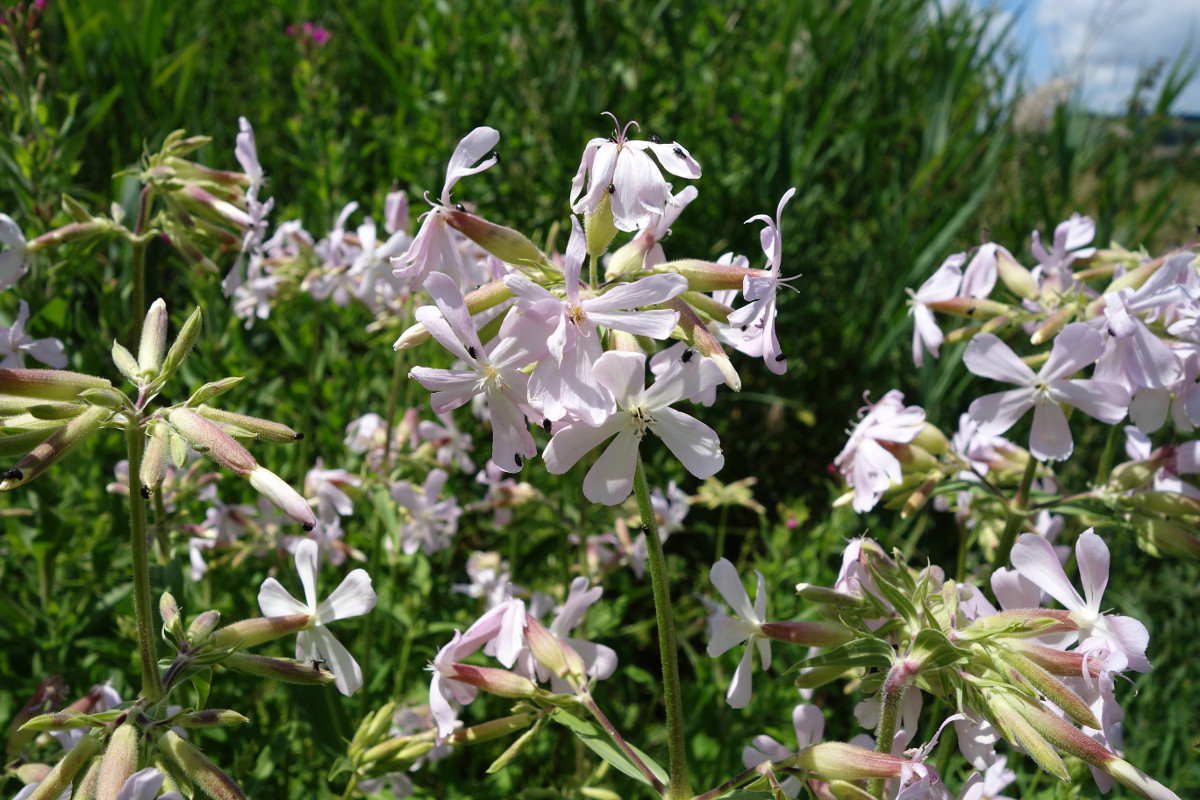Benutzer-Werkzeuge
Saponaria officinalis L. - Caryophyllaceae - soapwort, bouncing bet, Fuller's herb, Echtes Seifenkraut
Erect perennial herb, 30-70cm high; rootstock red-brown; leaves lanceolate, dark green, cross-opposite; flowers pale pink to white.
„In the Middle East, the root is often used as an additive in the process of making the popular sweet, halvah. The plant is called ‘erq al halaweh in Arabic, çöven in Turkish, and is utilized to stabilize the oils in the mixture or to create a distinctive texture of halvah.“
http://en.wikipedia.org/wiki/Saponaria_officinalis
Root and rhizomes contain 7% total saponin and 1.5% quillaic acid.
[Henry, M. (1989). Saponaria officinalis L.: in vitro culture and the production of triterpenoidal saponins. In Medicinal and Aromatic Plants II (pp. 431-442). Springer Berlin Heidelberg]
Major triterpenoid saponins of the whole plant are saponariosides A and B with quilliac acid as aglycon.
[Major triterpenoid saponins from Saponaria officinalis. Jia, Z., Koike, K., & Nikaido, T., Journal of natural products, Vol.61(11), 1998, 1368-1373]
The dried roots (Saponariae rubrae radix) are used traditionally as expectorant, to treat cough, bronchitis and other diseases of the respiratory tract. „Soapwort is thought to exert an expectorant action through irritation of nervus vagus in the gastric mucosa and in reflectory way by stimulating water excretion in bronchial tissues. Saponins might exert their anti-inflammatory activity via a corticomimetic effect.“
[Medicinal Plants of the World. Ben-Erik Van Wyk and Michael Wink, Pretoria 2004, 290]
Main components of the flower scent of S.officinalis are benzenoids, notably methylbenzoate (68%), together with methyl benzene (3.1%), 1,2-dimethyl benzene (1.2%), benzaldehyde (2.7%), benzyl alcohol (0.9%). Interesting Nitrogen-containing compounds were benzyl nitrile (2%), benzyl isonitrile (0.5%), indole (0.5%), and methyl anthranilate (0.1%). Another group are straight-chain aldehydes like hexanal (2.1%), heptanal (1.8%), octanal (2.5%), nonanal (4.3%) and decanal (2.6%).
[Flower scent composition in Dianthus and Saponaria species (Caryophyllaceae) and its relevance for pollination biology and taxonomy. Jürgens, A., Witt, T., & Gottsberger, G., Biochemical Systematics and Ecology, Vol.31(4), 2003, 345-357]
http://www.pollination.de/SILENE_PROJECT/information/Biochem_Syst_Ecol_2003_31_345-357.pdf

Woodville,W., Medical botany, vol.4 t.251 (1794)
http://plantgenera.org/species.php?id_species=905991

Saponaria officinalis, CC BY-SA 3.0, Author: Andreas Kraska
